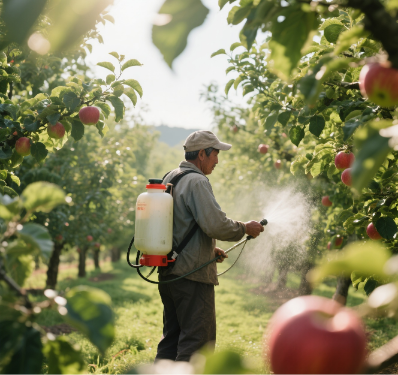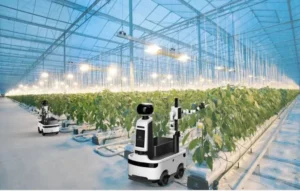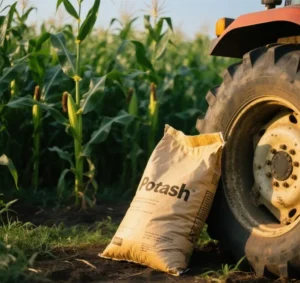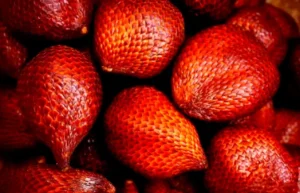As the foundational stage of the food supply chain, crop production plays a critical role in determining overall food safety. Based on the latest research and regulatory data, food safety risks in grain cultivation in China can be categorized into five major types. Below is an analysis of their specific characteristics and corresponding management measures:
1. Chemical Pollution: Traditional and Emerging Risks
Chemical contamination remains the most prominent risk in crop production, encompassing pesticide residues, heavy metal accumulation, and emerging pharmaceutical pollutants. Targeted strategies are essential.
1.1 Pesticide Residues
Status: In some regions, the pursuit of high yields has led to the excessive, frequent, and unauthorized use of pesticides. Banned or restricted chemicals such as chlorpyrifos and carbofuran are still detected in grain samples.
Risks: While acute poisoning cases are rare, long-term low-dose exposure may cause endocrine disruption, neurological damage, and potential carcinogenic effects from certain pesticide metabolites.
Key Management Measures:
-
Strictly enforce the Pesticide Management Regulation and GB 2763 Maximum Residue Limit (MRL) standards; prohibit the sale and use of highly toxic pesticides.
-
Promote unified pest control and drone-based precision spraying to reduce usage and improve application efficiency.
-
Implement pre-harvest inspections to ensure compliance with safety intervals; prohibit harvesting before the required interval.
1.2 Heavy Metal and Persistent Organic Pollutant Accumulation
Sources: Industrial waste discharge, sewage irrigation, and atmospheric deposition contribute to excessive levels of cadmium (Cd), lead (Pb), arsenic (As), and mercury (Hg) in farmland.
Risks:
-
Cd: Chronic exposure may cause kidney damage and osteomalacia.
-
As: Associated with skin and lung cancers.
-
Pb: Significantly impacts neurological development in infants and young children.
Key Management Measures:
-
Promote safe utilization of contaminated farmland: apply lime to adjust pH, use biochar or silicon-calcium fertilizers for immobilization in lightly/moderately polluted areas; switch to non-food crops (e.g., energy crops) or restore forests in severely polluted areas.
-
Develop heavy metal low-accumulation crop varieties to reduce contamination risks.
1.3 Pharmaceutical Residues from Reclaimed Water/Fertilizers
Emerging Risks: The use of reclaimed urban water for irrigation and sludge compost may introduce per- and polyfluoroalkyl substances (PFAS), antibiotics, and pharmaceuticals (e.g., carbamazepine) into grains.
Risks: Long-term intake may enhance antimicrobial resistance in gut microbiota and cause endocrine disruption.
Key Management Measures:
-
Reclaimed water must meet the Standards for Irrigation Water Quality (GB 5084-2021), with additional monitoring for pharmaceuticals and personal care products (PPCPs).
-
Sludge compost must be tested for heavy metals and antibiotics; unprocessed sludge is prohibited for direct field application.
2. Biological Contamination: Mycotoxins and Pathogens
Biological contamination primarily arises from storage conditions and irrigation practices, with mycotoxins and pathogenic microorganisms being the major concerns.
2.1 Mycotoxin Contamination
Status: Excessive moisture during harvest due to rainy weather, coupled with delayed drying, promotes the growth of Aspergillus flavus and Fusarium, leading to aflatoxin B1, deoxynivalenol (DON), and zearalenone (ZEN) contamination.
Risks:
-
Aflatoxin B1 is a Group 1 human carcinogen; acute exposure causes liver necrosis, while chronic intake leads to liver damage and immunosuppression.
-
DON irritates the gastrointestinal tract, causing vomiting, diarrhea, and leukopenia.
Key Management Measures:
-
Promote delayed harvesting, mechanical loss reduction, and timely drying to ensure grain moisture content ≤14% before storage.
-
Implement combined storage strategies: low temperature (<15°C), low oxygen (≤5%), and mold inhibitors (e.g., sodium diacetate).
-
Establish rapid batch testing and risk-based classification for storage and distribution.
2.2 Pathogen and Parasite Contamination
Sources: The use of inadequately composted manure or contaminated irrigation water may introduce pathogens (e.g., Salmonella, E. coli O157:H7) and parasite eggs.
Key Management Measures:
-
Treat animal manure with high-temperature composting (≥55°C for 5 days) or anaerobic fermentation to eliminate pathogens and parasites.
-
Disinfect reclaimed or surface water with UV or ozone treatment and test for indicator bacteria (e.g., E. coli) before use.
3. Physical Impurities: Enhancing Mechanization and Storage Management
Physical impurities, though non-toxic, affect grain quality and safety.
Sources:
-
Rocks, glass, and metal fragments during mechanical harvesting.
-
Rodent/insect residues due to poor storage practices.
Key Management Measures:
-
Install magnetic separators and air screens on harvesters to remove impurities.
-
Enhance warehouse hygiene with insect and rodent prevention measures.
-
Promote the “Four No’s Granary” initiative: no pests, no mold, no rodents/birds, and no accidents.
4. GMO and Seed Contamination: Ensuring Variety Purity and Certification
GMO and seed contamination affects export compliance and organic certification.
Key Issues: Pollen drift from GM crops (e.g., corn, rice) may lead to commingling with non-GM varieties, violating export restrictions and organic standards.
Key Management Measures:
-
Establish ≥300-meter isolation zones or stagger planting schedules to minimize pollen drift.
-
Conduct PCR-based batch testing for seeds to ensure non-GMO purity.
-
Implement traceability codes to track varieties from seed to harvest.
5. Weakness in Production Environment Management: Addressing Small-Scale Farming Gaps
Inadequate environmental management remains a challenge, especially for small-scale producers.
Common Shortcomings:
-
Lack of standardized records for pesticide and fertilizer use.
-
Low annual monitoring coverage for soil and irrigation water quality (<30%).
-
Illegal trading of banned pesticides via e-commerce platforms.
Targeted Solutions:
-
Implement the “Edible Agricultural Product Compliance Certificate” system; require producers to conduct self-testing or third-party inspections.
-
Develop field records and QR code traceability systems to log pesticide use, application timing, and harvesting details.
-
Strengthen enforcement: conduct unannounced inspections of high-risk areas and divert contaminated grains to non-food uses (e.g., biofuel production).
Conclusion: Integrated Governance for Source-Level Safety
Food safety risks in crop production are characterized by a mix of traditional and emerging challenges. To safeguard the first step “from field to fork,” a holistic approach spanning source substitution, process control, and end-point monitoring is essential. This includes replacing highly toxic pesticides with green alternatives, rehab contaminated farmland, improving drying and storage practices, and enhancing digital traceability. Only through multi-stakeholder collaboration can risks be systematically reduced to ensure food safety at the source.









